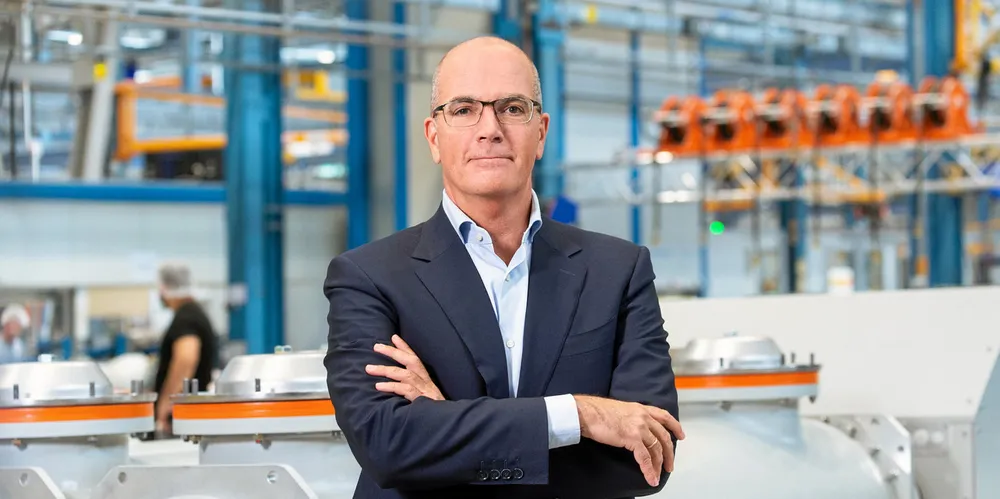'Strengthen global power grids for the renewables revolution or get set for a bumpy ride'
Clean energy investment will reach $2trn a year by the end of this decade but the world will miss out on the fullest economic benefits unless we seriously upgrade our power transmission infrastructure, writes Claudio Facchin

Today’s global energy crisis is a source of pain for many: it strains personal wallets and contributes to surging inflation. But there’s a silver lining. It is also accelerating the global transition away from fossil fuels and toward a world powered largely by clean electricity from wind and solar.
<b>Focus your mind: get the insight you need with the Recharge Agenda</b>
The global energy transition is gathering momentum – and the accompanying news-stream becoming an information deluge. Separate the green giants from the greenwash and the hard facts from the click-bait headlines with Recharge Agenda, our curation of the market-making events of the week, distilled down into one quick-read newsletter. Sign up here for free
There’s a catch, of course. To fully benefit from those investments, we must also seriously upgrade our power transmission infrastructure to form the backbone on which the global energy system will continue to be built.
The global energy system that is rapidly emerging will be much more diverse and complex than today’s, of course. By 2030, half of electricity could be generated by renewable sources led by wind and solar, up from 28% today. By 2050 they could account for 80% of all generation, says the IEA. But renewables plant output can vary dramatically, depending on wind speeds and hours of sunshine.
And power demand is going to surge as more EVs hit the road and heat pumps see widespread installation in cities and their suburbs, while use of air conditioners grows dramatically as global temperatures rise, with electricity by mid-century account for as much as half of all energy used globally, up from 20% now.
Patterns of consumption will change too, especially when millions are recharging their cars at night.
Failure to strengthen the grid to meet both this swelling demand and the needs for real-time flexibility to handle the variability of production from renewables and we could be in for a bumpy ride. In the past, utility companies often responded to spikes in demand by firing up fossil fuel plants.
Power grids will need to be twice as flexible by 2030 as they are today: by 2050 the world will need four times of the generation capacity and be able to transfer three times as much electricity.
So what will the grid of tomorrow need to look like? One, it will have greatly increased transmission capacity and interconnections combined with energy storage to improve flexibility; two, it will be run on next generation digitalization technology honed for sustainability and superior power electronics; three, it will operation globally with a “system-wide approach” to the energy transition that will enable innovative collaboration across industrie and sectors.
Most electricity grids were built to deliver power to homes and companies in a single country, or part of a country. While that worked well in the past, more intermittent electricity supply and demand increases the need for links to seamlessly carry power from where it is available to where it is needed, often over longer distances.
In 2021 several major power interconnectors came into service, including the record-setting 720km 1.4GW North Sea Link between Norway and the UK and the 623km NordLink between Norway and Germany, opening up further channels between these northern European countries to exchange wind, solar and hydro power. Many more of these types of interconnections will be needed to ensure reliable electricity supply in the future.
Because of the tremendous scale and complexity of energy systems, and the urgency to act – wind and solar plants and their transmission line can take as long as a decade to bring online – companies, academia and governments must collaborate in new ways to find innovative solutions now. That’s particularly true in industries where the barriers to using clean energy are high, such as aviation, cement manufacturing and steel making. Bringing together diverse know-how and technologies will increase the chances of cracking some of the toughest challenges.
Shifting from a global energy system powered mostly by fossil fuels to a more sustainable one powered mainly by clean electricity is a massive undertaking. As this historic energy transition gathers momentum, and as we are advancing a sustainable energy future for all, we must take steps to ensure electricity grids are robust and flexible enough to continue reliably powering our lives and economies.